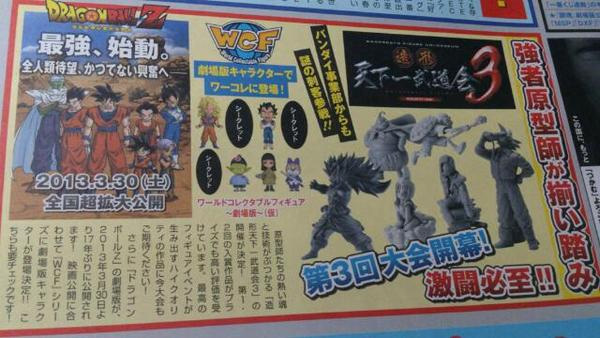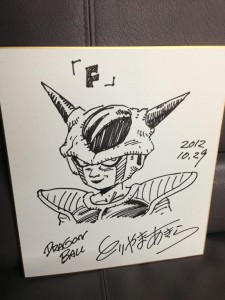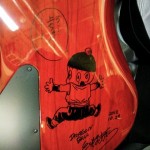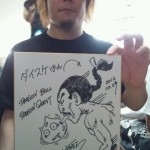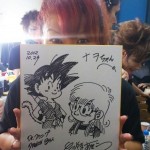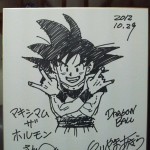Dragon Ball Z: Budokai HD Collection saw its release on the PlayStation 3 and Xbox 360 across North America (and slightly internationally, though not in its original home land of Japan) this past week. Much like we did with Dragon Ball Z for Kinect, we felt it would be helpful to break down some of the most important aspects of the collection and answer some of the most pressing questions.

Which systems are this collection available on?
Dragon Ball Z: Budokai HD Collection is available on both the PlayStation 3 and Xbox 360.
Which games are included in this collection?
The first (Dragon Ball Z / Budokai) and third (Dragon Ball Z 3 / Budokai 3) games from the original PlayStation 2-era trilogy of fighting games are included on the game disc.
Why is the second game not included?
Namco-Bandai has given very vague answers about why Dragon Ball Z 2 / Budokai 2 was not included in this package. It seems to be a combination of feeling that the first and third games had the most impact and most to offer fans, while production and conversion time (and budgeting) likely also came into play.
Who handled the ports of these games?
While not handled by Namco-Bandai or even Dimps directly, Pyramid took care of the conversion. Most recently know perhaps for the Patapon games on PSP, Pyramid did also handle the conversion of the first two Budokai games from the PlayStation 2 to the Nintendo Gamecube.
Can I easily switch between the two games?
No. You must exit the game entirely to get back to the initial menu to select either Budokai or Budokai 3.
Which languages are included?
Though European fans originally saw the first Budokai game released with its original Japanese language track, North American fans received the game exclusively with an English dub. The third game was initially released in North America dub-only as well, but a “Greatest Hits” re-release upgraded the game with a bilingual option to choose the original Japanese language track. Marketing blurbs leading up to the HD Collection’s release were confusing, but we can confirm that the North American release of the collection contains only the English dub for the first game, but selectable English or Japanese language tracks for the third game. The European release of this collection features the original Japanese language track for the first game (with localized subtitles depending on the system setting), and the same selectable English and Japanese language tracks for the third game.
Why is the cover art different than I remember?
The default cover art for the collection is actually a combination of the European cover art for the first and third games — it was common at the time for Japan, North America, and Europe to receive completely different art for their local versions. The North American release of the HD Collection actually contains a reversable cover inside the case, with the opposite side sporting the original Japanese cover art for the first and third games (our “Greatest Hits” re-release of Budokai 3 also switched to the Japanese cover art, so this particular image might be familiar to some fans).
Why is the music different than I remember?
Long story — too long to cover in a quick post. In a nutshell, the composer for the Budokai games — Kenji Yamamoto — was brought on to do the score for Dragon Ball Kai, which was ripped out of the “refreshed” series just before it finished airing in Japan. Toei confirmed “multiple suspicious musical pieces which may infringe on the rights of third parties” in the score, and these repercussions have extended all the way down through video games that Yamamoto had been involved with, which has now affected the Budokai series. All Kenji Yamamoto music in these two games (including Budokai 3‘s opening theme, “Ore wa Tokoton Tomaranai!!”) has been replaced with either pre-existing replacement music (from the Sparking! / Budokai Tenkaichi days onward) and/or new pieces. “Rock the Dragon” (overtop the “CHA-LA HEAD-CHA-LA” animation, which indeed played in the Japanese release) still opens the first game, however.
Is there online multiplayer?
No. There has been nothing added in terms of online functionality beyond trophies/achievements. Passwords are still created in Budokai 3 for you to manually share with friends.
What graphical enhancements have been made?
The actual fighting runs smoothly in a true 16:9 frame at a new 720p display in both games. Some graphical elements have been updated for the new display mode, while others have not — for example, some cutaways will still take place in a 4:3 window with pillar bars on the sides. The first game still runs with its original PS2 style of character models, as opposed to the upgrade given for the Gamecube port.
Are the three extra costumes from the Japanese / “Greatest Hits” Budokai 3 still included?
They are definitely there in the European release, but I have not yet had a chance to complete all 11 “Dragon Universe” stories to unlock “Dragon Arena” to test it out in the final North American release. We should be able to independently confirm this soon enough for you, though!
I’ve never played a Budokai game before. Should I start here?
Tough call. The original Budokai is extremely clunky, but does feature impressive cutscenes and fun “What If?” stories. Budokai 3 is still as competent a game as it was nearly ten years ago, but was eclipsed in various ways by subsequent releases such as Infinite World (PS2) and Shin Budokai 2/Another Road (PSP). With its music missing — arguably a huge part of the original experience considering the talent, such as Tower of Power and Steve Lukather, brought in to collaborate — part of the (dragon) soul feels missing. The Budokai series certainly offers a different fighting experience from nearly everything released on consoles once the Sparking / Budokai Tenkaichi series came around, so if the simulator-feel was never your thing, you might have a friend in some older games.
Look for our full review coming soon!
